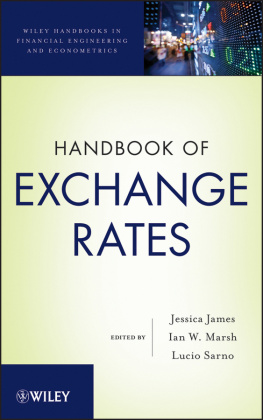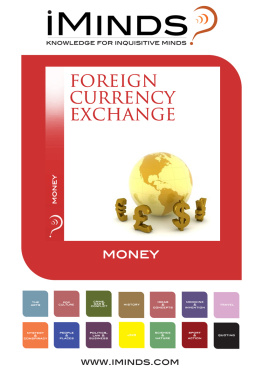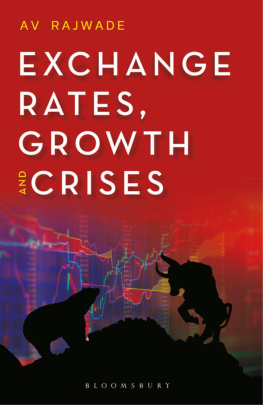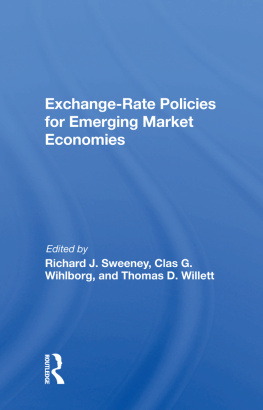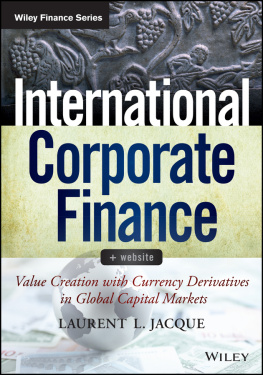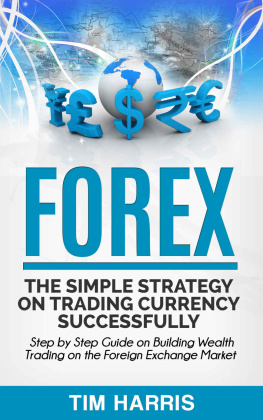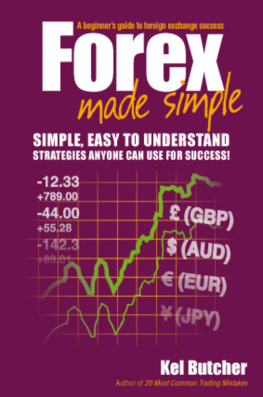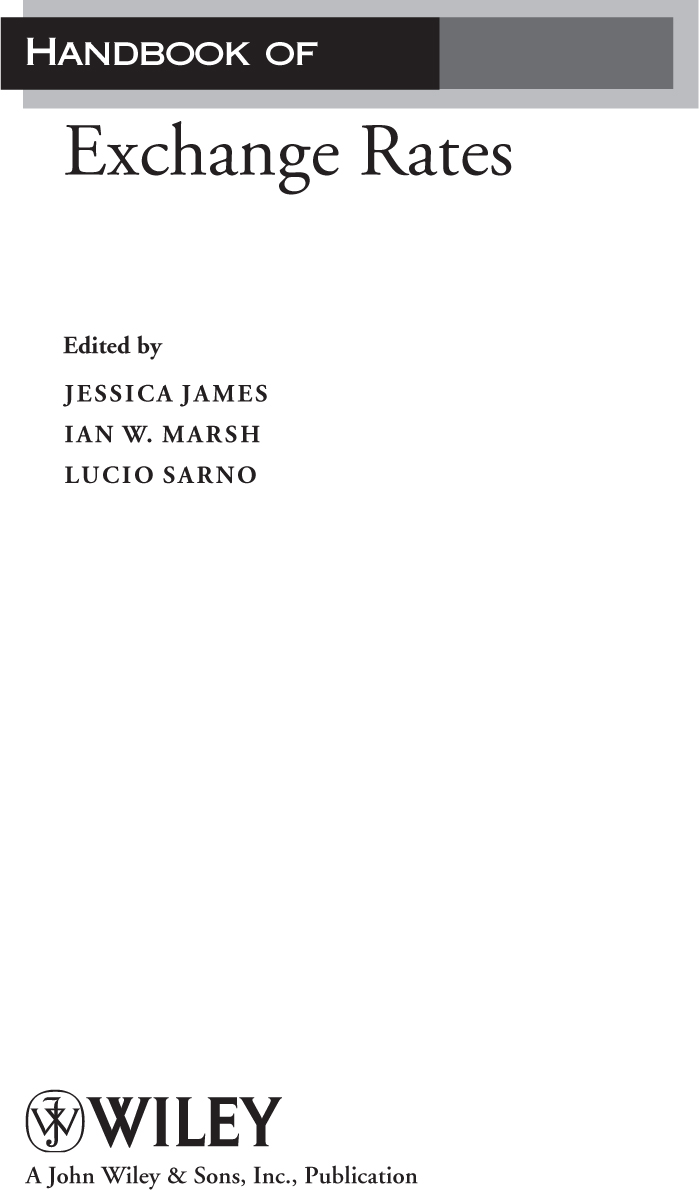Copyright 2012 by John Wiley & Sons, Inc. All rights reserved
Published by John Wiley & Sons, Inc., Hoboken, New Jersey
Published simultaneously in Canada
No part of this publication may be reproduced, stored in a retrieval system, or transmitted in any form or by any means, electronic, mechanical, photocopying, recording, scanning, or otherwise, except as permitted under Section 107 or 108 of the 1976 United States Copyright Act, without either the prior written permission of the Publisher, or authorization through payment of the appropriate per-copy fee to the Copyright Clearance Center, Inc., 222 Rosewood Drive, Danvers, MA 01923, (978) 750-8400, fax (978) 750-4470, or on the web at www.copyright.com. Requests to the Publisher for permission should be addressed to the Permissions Department, John Wiley & Sons, Inc., 111 River Street, Hoboken, NJ 07030, (201) 748-6011, fax (201) 748-6008, or online at http://www.wiley.com/go/permission.
Limit of Liability/Disclaimer of Warranty: While the publisher and author have used their best efforts in preparing this book, they make no representations or warranties with respect to the accuracy or completeness of the contents of this book and specifically disclaim any implied warranties of merchantability or fitness for a particular purpose. No warranty may be created or extended by sales representatives or written sales materials. The advice and strategies contained herein may not be suitable for your situation. You should consult with a professional where appropriate. Neither the publisher nor author shall be liable for any loss of profit or any other commercial damages, including but not limited to special, incidental, consequential, or other damages.
For general information on our other products and services or for technical support, please contact our Customer Care Department within the United States at (800) 762-2974, outside the United States at (317) 572-3993 or fax (317) 572-4002.
Wiley also publishes its books in a variety of electronic formats. Some content that appears in print may not be available in electronic formats. For more information about Wiley products, visit our web site at www.wiley.com.
Library of Congress Cataloging-in-Publication Data:
Handbook of exchange rates / [edited by] Jessica James, Ian W. Marsh, Lucio Sarno.
pages cm. (Wiley handbooks in financial engineering and econometrics ; 2)
Includes bibliographical references and index.
ISBN 978-0-470-76883-9
1. Foreign exchange rates. 2. Foreign exchange. I. Sarno, Lucio.
II. James, Jessica, 1968 III. Marsh, Ian W., 1966
HG3810.H35 2012
332.456dc23
2011052323
For my children Zach and Miriam, my constant sources
of inspiration!
Jessica James
To my wonderful wife Michela
Ian W. Marsh
To my fantastic wife Julia
Lucio Sarno
Preface
The Foreign Exchange market, as we know, was born in the 1970s. To us in the second decade of the third millennium, mainly accustomed to freely floating and convertible currencies, the events that led to its birth would seem almost incredible. It is huge news when a government, via its central bank, intervenes to shift its currency or keep it stable. But from the end of World War II to the mid-1970s, pegs and interventions were the norm for almost all currencies.
The post war era gave us the Bretton Woods agreement that set the United States as the world's reserve currency and pegged most others to it. The United States was backed by gold, and the stability that this system brought enabled trade flows to enormously grow worldwide. This was deliberate; in the preceding decades, the architects of the system had seen how economic stresses could lead countries to war and were driven by a desire to promote trade and allow the world economy to grow.
However, the Vietnam war brought a growing US trade deficit and a drift of the alignment of the United States and the US dollar with the rest of the world. Pressure grew on the exchange rates and one by one, led by the Japanese yen, the currency became freely convertible and floating. By 1976, the gold standard was no more present and the majority of the world's currencies had the form we know today.
From that not-so-auspicious beginning grew the world's largest market. Today, according to the 2010 BIS report, currencies to the value of over US$4 trillion are traded each working day in global markets. The total value of global equity is a fraction of this amount. In most countries, the traded volume of the currency vastly exceeds the total amount of government debt. Foreign exchange has indeed come of age.
But what is it like, compared to other rates? It is not an interest rate. An interest rate is highly predictable and stable between close to zero, and perhaps exceptionally 15%. Outside these ranges, interest rates historically do not last long; high rates are often followed by spiralling hyperinflations, and negative rates do not occur without anomalous market stresses. It is not an equity, which has a floor at zero and is at least expected to appreciate with inflation.
There is a symmetry to foreign exchange, which is lacking in other market rates. One is long or short of an equity; in foreign exchange to be long of one currency is to be short of another. It is a rate of exchange and not an ownership of an asset. It has no floor or ceiling, no particular stable region. As befits the largest global market, it is also the easiest and cheapest to trade in, with transactions often costing just a single basis point1% of 1%in bid-offer spread.
How and why has it grown to such a size? Partly, it is the nature of the beast and the way it is traded. Most foreign exchange transactions are done on a margined basis, with the principal amounts being notional only. Thus, for a simple forward trade of 1 month's duration, where a rate of exchange is locked in for 1 month ahead, no capital is exchanged at the start. At the end, the difference between the agreed rate and the market rate is paid out, scaled by the notional amount of the deal. This is usually at most a few percent of this notional amount. So one can see that it is unnecessary to actually own a sum of money equal to the notional amountit is more of a scaling factor to the deal. Hence, the notional flows in the market can be very large relative to a smaller capital base.
Another reason for the size of the foreign exchange flows is that speculative trades, which have grown vastly in size and number over the last few years, are usually leveraged. The foreign exchange market is somewhat less volatile than the equity or commodity market, and so to generate comparable profits, profit seeking traders usually apply a multiplier to the notional amount. The last decade has seen the development of foreign exchange as an asset class, where structures suitable for investors are created around foreign exchange transactions. These often utilize large notional amounts to generate returns.
These additions increase an already considerable bulk of foreign exchange trades in the market. One critical activity made possible by the advent of floating exchange rates is hedging. Overseas investments can have their value drastically altered by fluctuations in the foreign exchange rates; hedges allow investors and corporates to immunize their portfolios and cashflows against these variations. Thus the growth of overseas investment has itself driven the volume of foreign exchange transactions higher; the investments, particularly less volatile fixed income instruments, will be significantly affected by foreign exchange movements unless they are hedged.

